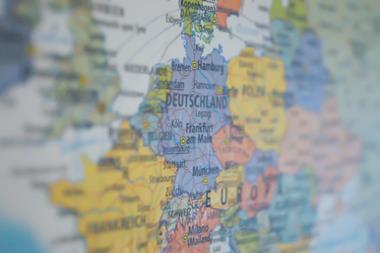Petra Hielkema, EIOPA’s chair, sets out how the authority and EU policymakers can build an ecosystem capable of plugging the substantial pension gaps Europe is facing
One of Europe’s policy focuses is to create deeper, more integrated and larger capital markets in the European Union, which will contribute to providing private financing for achieving the EU’s broader objectives.
Insurance and pension funds will play a pivotal role as the largest institutional investor sectors, providing a variety of pension and savings products, and thus contributing to address the substantial pension gaps that Europe is facing.
Indeed, only 45% of Europeans are financially confident in their retirement – 37% of women and 47% of men – making the gender gap evident. Further, in 2022, more than one in five (20.2%) people aged 65 and above were at risk of poverty or social exclusion in the EU: for women, again, this percentage is higher (22.9%). Most EU citizens still fully depend on statutory pensions for their future retirement income.
An ageing population and longevity risk contribute to heightened concerns about the financial sustainability of pension systems and the overall economic stability. A robust three-pillar pension system can contribute to economic stability by reducing the pension gap, while also supporting the Capital Markets Union (CMU) through increased (retail and institutional) investment via pension savings.
Most importantly, the availability of adequate and sustainable pension incomes is of paramount importance in building a fairer and more inclusive EU.
For that to happen, an entire ecosystem needs to be in place
Raising awareness at individual and member state level: Transparent information on retirement income generated by national pension systems is essential. Requiring member states to establish pension-tracking systems (PTS) covering all three pension pillars would enhance citizens’ awareness of their future retirement income.
In addition, pension dashboards at the European and member state level are essential to support policymakers in monitoring the adequacy and sustainability of pension systems and thus helping governments in adopting distinctive measures to address the gaps.
“Should a legislative review not take place, it would be at least important to explore an EU label/quality mark for pensions”
Petra Hielkema, chair of EIOPA
Creating a culture of long-term investment in capital markets through financial education and access to simplified financial advice: To achieve and maintain financial health, it is essential to give consumers the tools to make informed decisions and be able to meet their financial needs and objectives.
Financial education should start from an early age and be reinforced through continued financial learning (especially in the workplace, but also through pension providers – without this activity automatically qualifying as financial advice) and health-check moments in anticipation of key life milestones (eg, marriage and family, home-buying, retirement). In addition, there should be scope for limiting the need for advice to ensure the setup of simple and safe personal pension products.
Incentivising participation in occupational pensions through automatic enrolment, where compulsory participation is not possible: To increase coverage of supplementary pensions, member states should introduce a system of auto-enrolment, where occupational pension saving is not yet mandatory, as the inertia generally helps citizens to save more.
Further, systems of auto-enrolment would need to be accompanied by flexible schemes to ensure consumers can continue saving for retirement even if, for example, they leave the workforce, or become self-employed workers, etc.
Good retirement products that take into account pensions needs: Not all long-term savings products are good retirement products.
Ideally, a product designed to meet individuals’ retirement goals needs to:
- have tax-advantaged contributions;
- have restricted liquidity access until retirement to ensure long-term financial security;
- be flexible in order to cater for career breaks;
- and be portable (from job to job and from country to country).
“A first step would be to enhance EIOPA’s remit beyond IORPs and PEPP”
Further, from the experience of the first Pan-European Pension Products (PEPP), any revised EU long-term saving products should:
- have the same fiscal treatment as other comparable pension products within each member state, and;
- avoid the imposition of any cost cap, especially at the beginning, in order to foster a good uptake and reach economies of scale, which will naturally lead to lower cost charges.
More generally, to orient savings towards capital markets, it is important consumers trust that products offer them value for money, ie, that they are not charged undue costs and are offered good returns in the medium to long term.
Where could EIOPA concretely help?
Policy advice. While the introduction of the PEPP did not lead to a significant uptake of products, EIOPA still sees the merits of simple, portable, digital-first pension products that offer value to consumers, either at EU level or at national level.
EIOPA plans to undertake an assessment to better understand why there has been limited uptake of PEPP to inform a review of PEPP (or similar EU-wide pension products) and to explore the possible decentralised development of long-term savings products.
EIOPA stands ready to support the European Commission in the development of a European pension dashboard. EIOPA could provide technical assistance to the European Commission and/or member states in developing sound and adequate supplementary pensions bringing together labour market, behavioural, prudential, conduct and market considerations to help close the pensions gaps and take a step further toward the creation of a CMU.
How could EU policymakers take things forward?
Data and analysis. Ensure that a European Pensions Dashboard could be developed in such a way as to provide a holistic view of pensions gaps by requiring the establishment of a taxonomy of pension pillars, identifying data sources and developing a common set of indicators.
Regulation. Initiate a possible review of the PEPP Regulation (and/or legislative proposal for an alternative EU-wide savings product). Should a legislative review not take place, it would be at least important to explore an EU label/quality mark for pensions. Further, EIOPA’s advice on the review of the IORP II Directive should be implemented so as to better protect members and beneficiaries of IORPs.
Supervision. EIOPA, through its conduct of business oversight work, would like to monitor if personal pension products in Europe offer value for money, but it is currently hindered in its ability to do so. This is because personal pension products tend to be excluded from the scope of retail investment products in EU regulation, such as the IDD and PRIIPs Regulation and thus, without any underlying product governance regime, a convergent EU approach to effective product supervision of personal pensions cannot be promoted.
In addition, some types of private pension providers fall even outside the scope of EU regulation. Moreover, in some member states, the same financial institutions provide privately managed pensions across all pillars, including those in scope of the IORP II Directive.
To increase trust in supplementary pensions, a first step would be to enhance EIOPA’s remit beyond IORPs and PEPP, thus allowing it to make a supervisory assessment of all financial institutions that provide private pensions and of the value for money offered by all supplementary pension plans and products (including insurance investments and savings products).
The latest digital edition of IPE’s magazine is now available

































No comments yet